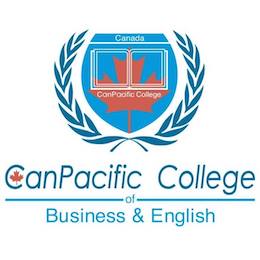
Are you new to Canada or considering coming here? It’s always good to know some facts about the place you’d like to live or visit. Below you can learn some fun facts about Canada.
10 more things you should know about Canada
1. Canada has 6 time zones
Because of the vast area it covers, Canada has six time zones: Pacific Standard (PST), Mountain Standard (MST), Central Standard (CST), Eastern Standard (EST), Atlantic Standard (AST), and Newfoundland Standard (NST). To have an idea of which time zone is observed per area, here are sample cities: Vancouver (PST), Edmonton (MST), Winnipeg (CST), Eastern Standard Time (Toronto), Halifax (AST), St. John’s (NST). For a complete map of regions/areas and their time zones, go to: WorldTimeZone.
2. Official weights and measures
Officially, Canada uses the Metric System. While its use was legalized as early as 1871, the switch from imperial to metric began in the 1970s, backed by Canadian government policy. However, you will notice that even today, some imperial units are still preferred. For instance, a person’s height is still mentioned in feet and inches, bulk foods sold in pounds, houses quoted in square feet, and fabric sold by the yard.
3. Official languages
Canada declared English and French as its official languages in 1969 (Official Languages Act). Because of this, all federal institutions must provide services in English or French on request (which is why in order to work for a federal government position, one must be bilingual). This is also why it is a requirement for anybody immigrating to the country to be proficient in either English or French. A greater percentage of Canadians speak English, with about 17% able to speak English and French. A vast majority of Francophones live in Quebec.
4. Capital city
Canada’s capital city is Ottawa in Ontario. This is where the seat of government is located. But why Ottawa? According to history, in 1857, Queen Victoria chose the city because it was centrally located between Montreal and Toronto, and was along the border of Ontario and Quebec (the centre of Canada at that time). She also chose Ottawa because it was far from the American border, making it safer from attacks (Parliament of Canada).
5. Total population
Official population counts based on Statistics Canada (2011) is 33.4 million. Meanwhile, estimated counts for the first quarter of 2016 places the population at 36.1 million (Statistics Canada). Historically, Canada has always been culturally diverse. Since the 1890s, it has opened its doors to people from all over the world. This is why, aside from aboriginals (who were the original residents), most Canadians are descended from immigrants, many coming from France and the UK. In 2011, it was reported that more than one-fifth of Canadians are foreign born, the highest proportion among G8 countries.
6. Canadian taxes
Canadian residents pay income taxes and sales taxes at both the provincial and federal levels. Income taxes are progressive, meaning the rate depends on your income. Meanwhile, everyone pays a Goods Sales Tax (GST) and Provincial Sales Tax (PST) for purchasing merchandise. GST is set at five per cent of the purchase price, while PST rates vary per province/territory (go to the Canada Revenue Agency site to know). This may sound like you have to pay a lot of taxes, but considering the country’s efficient social services (think Medicare, Canada Child Benefit, newcomer settlement services, and other benefits), you may think otherwise.
7. The longest coastline in the world
Canada’s coastline borders on the Atlantic, Pacific and Arctic oceans. The length of its coastline is 243, 791 kilometres, the longest coastline of any country.
8. Source of rare chemical elements
The country is the largest producer of natural uranium in the world. This mainly comes from the province of Saskatchewan. Over 80% of this element is exported for electricity generation. Meanwhile, more than two-thirds of the world’s reserves of cesium are found in Bernic Lake, Manitoba. Cesium is used in building highly precise atomic clocks.
9. UN founding member
Canada has always been known as a peace-loving, humanitarian nation. It is a founding member of the United Nations. In fact, The United Nations Declaration of Human Rights was authored in large part by Canadian law professor, John Humphrey.
10. Cleanest air
In a recent World Health Organization study, Canada placed third in the list of countries with the cleanest air on the planet. This may be due in large part to the fact that 30% of the country’s total landmass is occupied by forest. This does not only contribute to the fresh air but also to the abundance of breathtaking natural sceneries which you will find all over the country.
———————————————————————————————————————-
Source: https://livelearn.ca/article/about-canada/10-more-things-you-should-know-about-canada/

